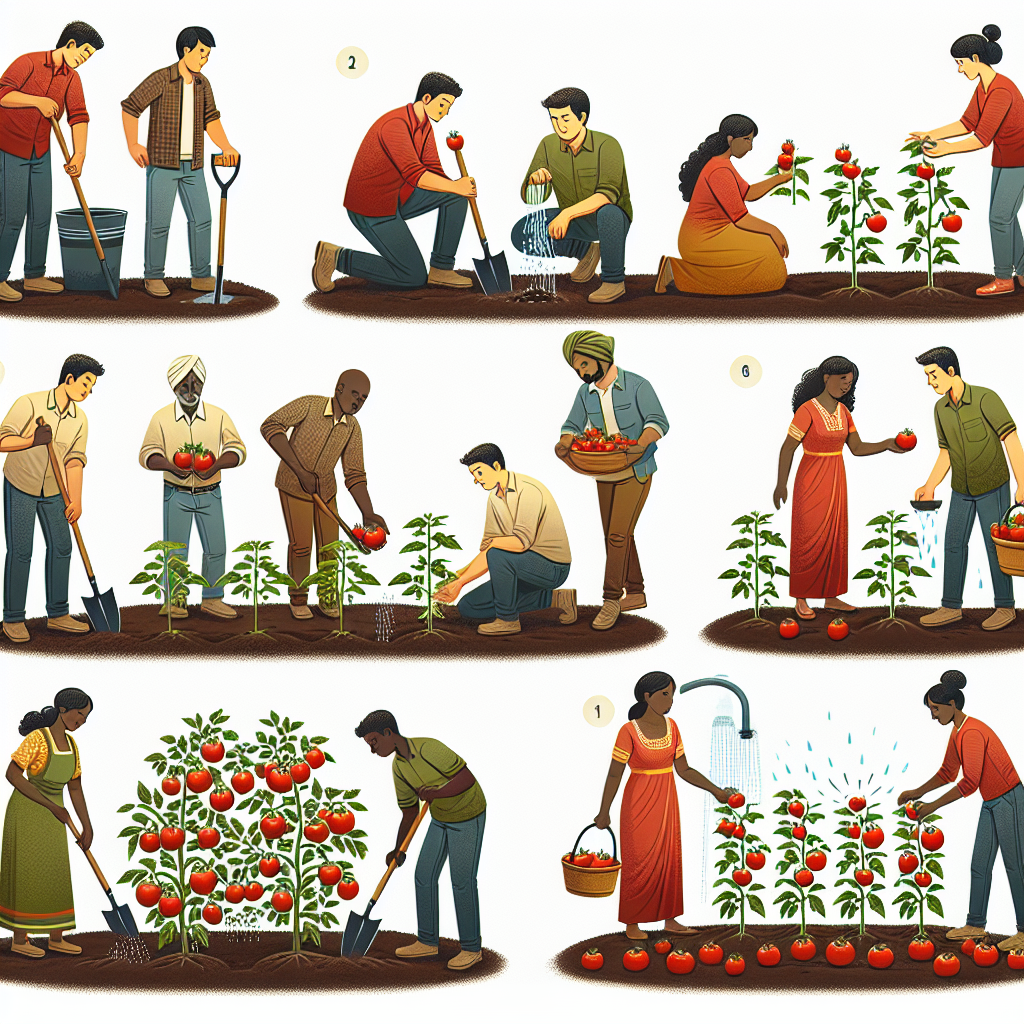
How do we plant tomatoes
How to Successfully Grow Tomatoes: A Complete Guide
Growing your own tomatoes is a rewarding experience that allows you to enjoy fresh produce right from your garden. Whether you are a seasoned gardener or a complete novice, understanding the basics of tomato cultivation is essential. In this guide, we will explore everything you need to know about tomato planting, care, and harvesting, ensuring that your plants thrive and produce delicious fruit.
Understanding Tomato Varieties
Before we delve into the specifics of how do we plant tomatoes, it's crucial to understand there are two main types of tomato plants:
- Determinate Tomatoes: These varieties grow to a certain height and then stop. They tend to produce fruit all at once, making them a good choice for canning and preserving.
- Indeterminate Tomatoes: These plants continue to grow and produce fruit throughout the growing season. They often require staking or support as they can grow quite tall.
Popular varieties include Roma, Cherry, and Beefsteak, each with unique flavors and uses. Choosing the right variety for your climate and intended use will set the stage for successful growth.
Preparing Your Garden Bed
Proper preparation of the garden bed is crucial for planting tomatoes. Here are the key steps to create an optimal environment for your plants:
- Choose the Right Location: Select a sunny spot in your garden that receives at least 6-8 hours of sunlight daily.
- Test Your Soil: Tomatoes prefer well-drained, loamy soil rich in organic matter. Conduct a soil test to check for pH levels and nutrient content.
- Amend the Soil: Based on the soil test, you may need to amend the soil with compost or fertilizers to enhance its fertility.
- Till the Soil: Use a garden tiller to break up the soil and improve aeration.
- Establish Rows or Beds: Create rows or raised beds that will allow proper drainage and easy access for maintenance.
Timing Your Planting
Timing is essential when it comes to planting tomatoes. They are warm-season crops that thrive in temperatures above 60°F (15°C). Here’s a timeline to help you get started:
- Start Indoors: If you live in a cooler climate, start seeds indoors 6-8 weeks before the last expected frost date.
- Transplant Outdoors: Once the risk of frost has passed and nighttime temperatures are consistently above 50°F (10°C), you can transplant your seedlings outdoors.
How Do We Plant Tomatoes
Now that you're ready, let’s dive into the specific process of planting tomatoes:
- Select Healthy Seedlings: Choose robust seedlings or young plants from a nursery, preferably those that are 6-8 inches tall with strong stems and healthy leaves.
- Spacing: Space your tomato plants 18-24 inches apart; this allows for adequate air circulation and prevents disease.
- Digging Holes: Dig holes that are deep enough to plant the seedlings up to their first set of leaves, which encourages strong root development.
- Watering: Before planting, water the seedlings well. After planting, water them lightly again to help settle the soil.
- Mulching: Apply a layer of mulch around the base of the plants to retain moisture and suppress weeds.
Care and Maintenance
Now that your tomatoes are planted, they require ongoing care to ensure a fruitful harvest. Here are essential maintenance tips:
Watering
Tomatoes need consistent moisture, especially during dry spells. It’s best to water them deeply once or twice a week rather than giving them shallow, frequent watering.
Fertilization
Fertilize your tomato plants every 4-6 weeks with a balanced fertilizer or compost to provide essential nutrients.
Pruning
Prune your tomato plants by removing the suckers (small shoots that develop in the leaf axils) to promote better air circulation and fruit development.
Pest Management
Keep an eye out for common pests like aphids and hornworms. Use natural pest control methods, such as introducing beneficial insects like ladybugs or using insecticidal soap.
Common Tomato Diseases and How to Prevent Them
Tomatoes are susceptible to various diseases that can impact their growth and yield. Here are some common diseases, signs to look for, and preventive measures:
| Disease | Symptoms | Prevention |
|---|---|---|
| Blight | Dark spots on leaves, wilting, brown patches on stems | Rotate crops, improve air circulation, and avoid overhead watering |
| Leaf Spot | Small spots on leaves, yellowing | Remove affected leaves, use resistant varieties |
| Root Rot | Wilting, yellow leaves, stunted growth | Avoid overwatering, ensure good drainage |
Harvesting Your Tomatoes
After several months of care, your tomato plants will start producing fruit. Knowing when to harvest is key to enjoying the best flavor. Here are some tips for harvesting tomatoes:
- Color: Tomatoes should be fully colored (depending on the variety) and slightly soft to the touch.
- Harvesting Technique: Gently twist and pull the fruit from the vine, or use pruning shears to avoid damaging the plant.
- Storage: Store tomatoes at room temperature to preserve flavor. Refrigeration can alter their texture and taste.
Tips for Success
To ensure a thriving tomato garden, consider the following additional tips:
- Companion Planting: Plant basil, marigolds, or garlic near tomatoes to deter pests and improve flavor.
- Staking: Support your plants with cages or stakes to keep them upright and prevent fruit from touching the soil.
- Rotate Crops: Avoid planting tomatoes in the same spot year after year to prevent soil-borne diseases.
Conclusion
In conclusion, growing tomatoes can be a fulfilling and enjoyable gardening venture. With the right knowledge and preparation, you can successfully cultivate your own tomatoes right in your backyard. Pay attention to the variety you choose, prepare your garden properly, and keep up with regular care and maintenance to ensure a bountiful harvest. Remember, the satisfying taste of home-grown tomatoes is unlike anything you can find in the store, and with a little effort, you can enjoy this delicious fruit all season long.
```By Guest, Published on August 22nd, 2024